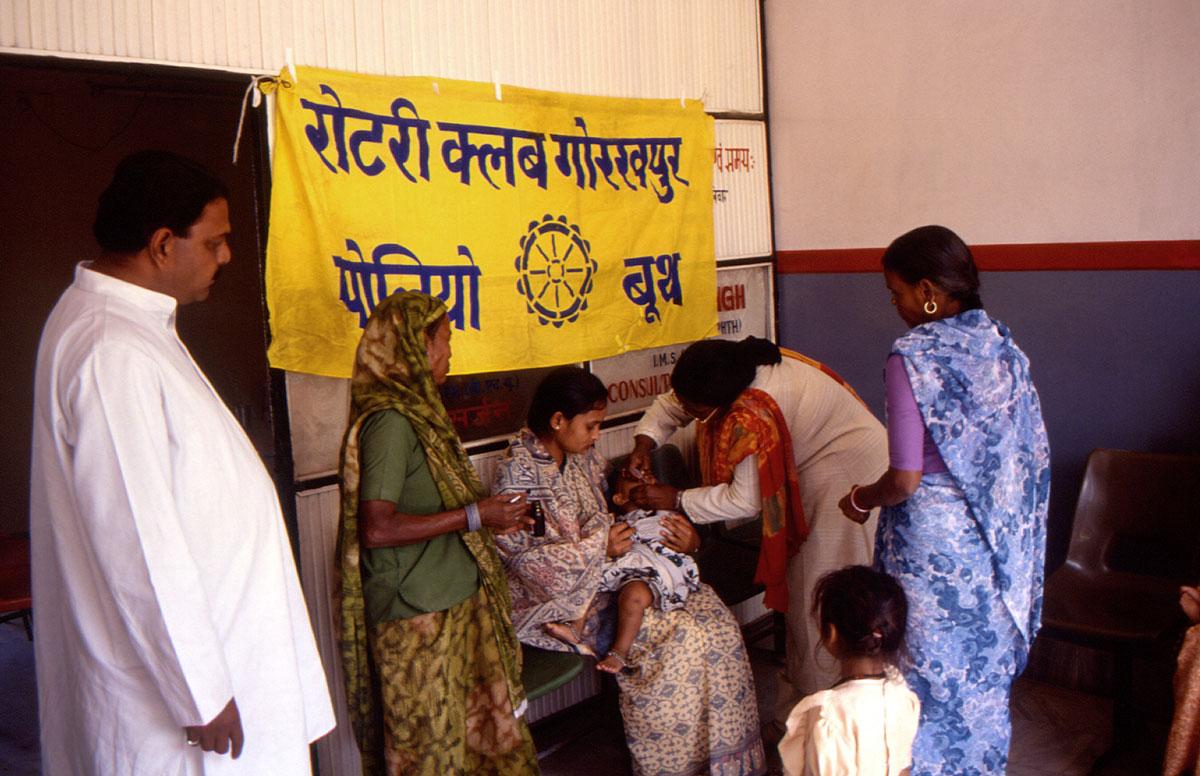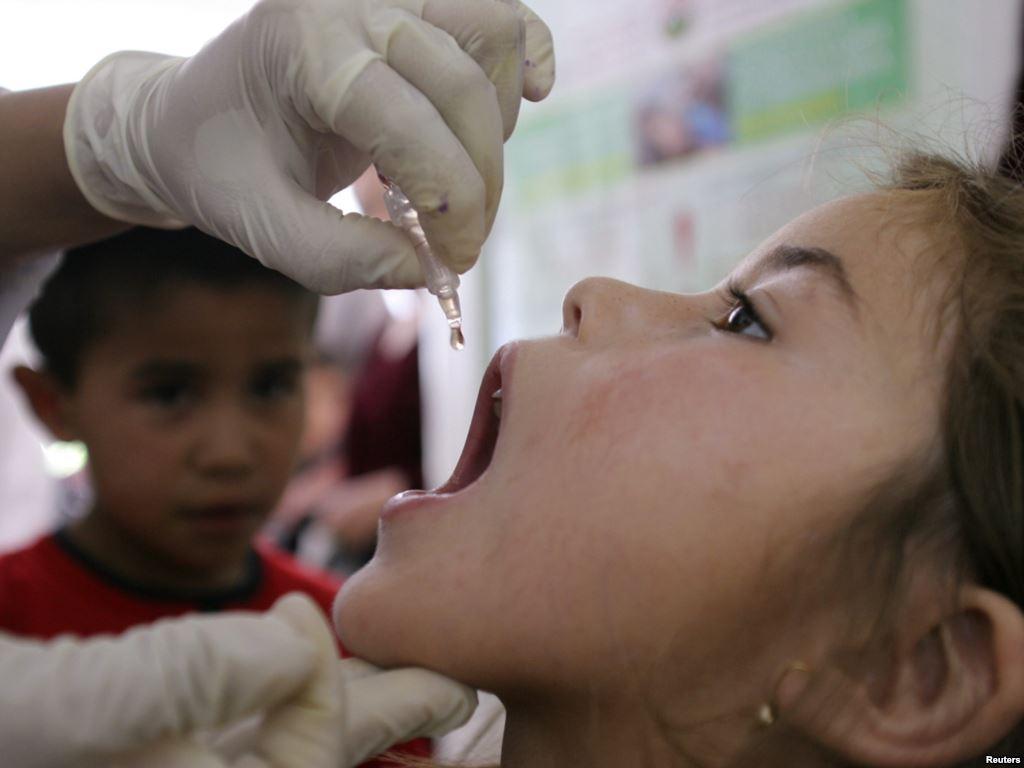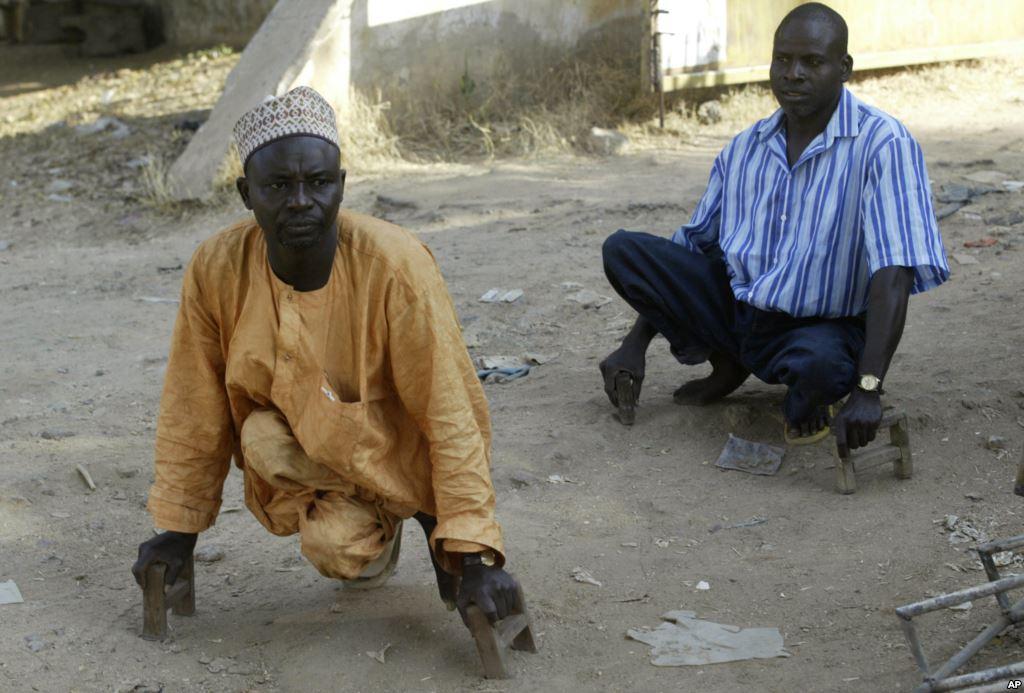Militant Eradicationism and the Politicization of Global Health
archive

Militant Eradicationism and the Politicization of Global Health
Kathryn Bigelow’s film Zero Dark Thirty generated enormous controversy upon its release in late 2012. But for all the debates surrounding the film’s depiction of torture and terror in the pursuit of Osama bin Laden, one scene drew scant media attention. As a team of CIA analysts closes in on the compound in Abbottabad, an agent briefs White House officials on the hunt. He describes the team’s efforts to identify bin Laden, noting that they have taken great pains to capture DNA from the compound’s residents. “We started a vaccination program, we sent a doctor to the house, to see if he could pull blood,” the analyst claims. As he speaks, the film cuts to the compound, where we see a Pakistani physician wearing a lab coat that reads, in Urdu and English, “Polio Immunization Programme.”

While many questioned the veracity of some of the film, this is relatively true to life. As became clear in the raid’s aftermath, the Central Intelligence Agency had employed Pakistani physician Shakil Afridi to pose as a Hepatitis-B vaccinator in order to draw blood from the compound’s residents for DNA identification. The plan failed, but this information had dramatic repercussions for public health workers. Already considered suspect in Pakistan, India, and many other developing countries, medical aid workers have now become the direct targets of violent terror campaigns, while finding their efforts to eradicate preventable diseases such as polio and measles turned back on many fronts.
The abominable use of a vaccination ruse for foreign intelligence purposes in an area awash in both infectious disease and aid workers points to two serious problems in contemporary global health work. The first is the politicization of global health interventions. As I have argued before, this dates to the late nineteenth century, when British, French, and Dutch officials used medicine and public health as tools for surveillance, migration control, and labor force management in their African and Asian colonies. We find critical manifestations of this phenomenon in the present. In addition to such flagrant abuses of medical trust as the vaccination ruse, figures such as Colin Powell tell the UN that American health workers “are a force multiplier” in the war on terror. As Rowan Gilles, then-president of Doctors Without Borders, argued, such claims place aid workers in grave danger. The organization—not known for shrinking in the face of violence—has since abandoned its missions in Afghanistan and Iraq as a consequence of direct assaults on its volunteers. And the vaccination ruse has made the situation worse, with dozens of health workers murdered in Pakistan and Nigeria since release of this information in July 2011.
But a less obvious concern also emerges if we closely examine the approaches that IGOs and NGOs have brought to global health in the past several decades. Since the success of the smallpox eradication campaign in the 1970s, vertical interventions have become the order of the day. Such projects aim at a single, circumscribable problem, tackling it through the deployment of enormous resources. These programs include failed efforts to stamp out malaria and hookworm alongside the successful smallpox campaign. But the largest, most expensive, and longest of these projects has been the polio eradication campaign, begun by the World Health Organization in 1988 with continuing support from Rotary International and the Bill and Melinda Gates Foundation.
Since the success of the smallpox eradication campaign in the 1970s, vertical interventions have become the order of the day. Such projects aim at a single, circumscribable problem, tackling it through the deployment of enormous resources.
Poliomyelitis is an extremely contagious virus, but most who catch the disease present no symptoms. They shed the virus in short order, but spread it to others through fecal-oral contamination—primarily through unclean drinking water. In one or two of every 200 cases, the virus attacks the nervous system, and produces short-term and sometimes lifelong paralysis. The disease is a leading cause of disability, particularly in children, and has now become primarily a disease of the unvaccinated. But immunization is difficult. The virus can live outside the body in water for up to sixty days, meaning it can travel through contaminated drainage and river systems in unpredictable ways. It takes four vaccine doses over several years to ensure immunization, greatly complicating vaccination logistics, particularly in developing countries. Meanwhile, the oral polio vaccine itself can spread the disease to immunologically naïve populations. This is a very rare phenomenon, but given the scale of this campaign, it has become statistically significant.

These factors have greatly complicated the polio program, costing billions of dollars. Against these odds, by the year 2000 the disease had been narrowed to just a handful of cases. But since then, resistance to the immunization program has arisen in West Africa and South Asia, primarily in Muslim populations, and the Mecca pilgrimage—among other factors—has facilitated its spread into some fifteen countries.
The media have been quick to label resistance to polio vaccination a product of rumor-mongering among Muslim populations. In India, rumors began to circulate in the early 2000s that the campaign was actually a Hindu nationalist conspiracy to sterilize Muslims; similar rumors about sterilization and genocide spread through northern Nigeria in the same period. Accounts in the mainstream and medical press considered Muslim credulity a bulwark against the campaign’s effectiveness. Yet the same accounts failed to examine both the historical legacy of public health campaigns in these regions as well as the militarism of such programs.

In summer 1975, on the heels of a dramatic intensification of the smallpox eradication campaign, Indian Prime Minister Indira Gandhi began a program to destroy slums and launched a coercive population control campaign that engaged in the rampant sterilization of many of India’s poorest citizens. It is thus unsurprising that a poor and politically subjugated minority population would greet a new, state-sponsored health campaign with some suspicion—as well as rumors of renewed sterilization efforts. A similar dynamic occurred in Nigeria, where, in 1996, Pfizer ran a clinical trial of a new antibiotic during an outbreak of bacterial meningitis. The trial has since become a symbol of ethical double standards in medical research in the developing world. The company’s researchers backdated and falsified consent forms, recruited participants out of a clinic where they would have received effective treatment, and tested the new drug against a dose and form of administration of the standard treatment known to be ineffective. Eleven children enrolled in the trial died as a result. Again, small wonder that residents are wary of Westerners bearing medical gifts and promising cures.
...it is time to rethink our approach to global health in general, as it is perhaps the militarization of eradicationist health campaigns that makes it so easy to coopt them for military ends.
A world without smallpox is a better world; a world without polio would be better still. Yet marshaling such extensive resources in the course of vertical public health campaigns that often run roughshod over individual liberties—and virtually ignoring longstanding public health infrastructure crises, including food and water insecurity, ineffective drainage and sewage treatment, and wretched housing and educational conditions—makes these programs so highly controversial and engenders such strong resistance. Shakil Afridi awaits trial in a Pakistani prison, and the Pakistani press has labeled him “the lowliest of traitors.” His crime—the abuse of medical trust in the service of a foreign intelligence operation—is a clear infraction of the Hippocratic oath as well as local laws. But it is time to rethink our approach to global health in general, as it is perhaps the militarization of eradicationist health campaigns that makes it so easy to coopt them for military ends.



